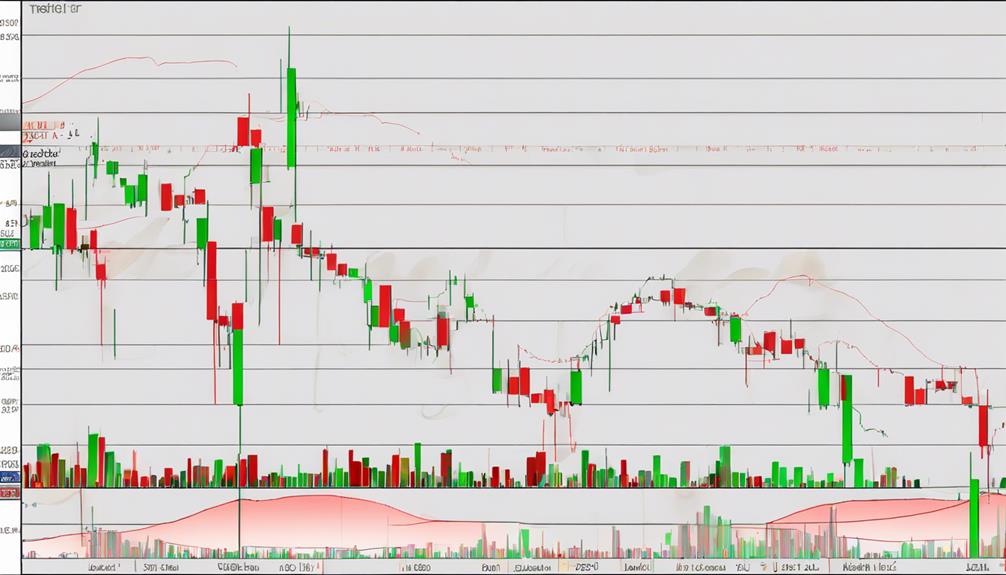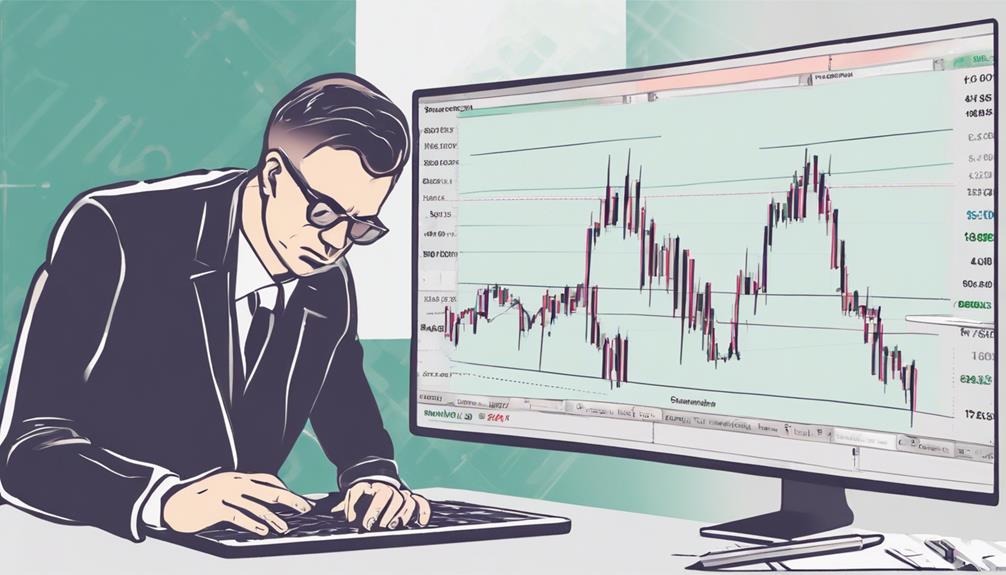When it comes to momentum indicators, one common misconception is that they alone can guarantee successful trading outcomes.
However, there are several typical errors that traders often fall into when relying too heavily on these indicators. From chasing overextended moves to neglecting fundamental analysis, there are pitfalls to be aware of.
By understanding these mistakes and learning how to avoid them, you can significantly improve your trading strategies and enhance your overall performance in the market.
Chasing Overextended Moves
Avoid falling into the trap of chasing overextended moves by entering trades too late after significant price increases. This risks buying at a peak. When trading, gauge the strength of momentum using indicators like the Relative Strength Index (RSI) or moving averages. Overbought conditions indicate a potential reversal, while oversold conditions might present buying opportunities.
Understanding these signals can help avoid common mistakes such as buying at inflated prices or selling too soon. Effective risk management involves recognizing sustainable momentum and avoiding the temptation to chase trades that have already made significant moves.
Focus on riding sustainable momentum rather than trying to catch overextended moves to maximize profits while minimizing risks.
Ignoring Fundamental Analysis

Neglecting fundamental analysis in your trading approach can result in overlooking crucial aspects that play a significant role in making informed investment decisions. When you ignore fundamental analysis while relying solely on momentum indicators, you expose yourself to higher risks and potential losses. By not considering factors such as market conditions and company financials, you may end up making uninformed trading decisions. To ensure well-informed trading choices, it's essential to balance both technical and fundamental factors.
Incorporating fundamental analysis alongside momentum indicators provides a more comprehensive view of the market, helping you interpret signals more accurately and make better trading decisions.
- Failure to consider company financials
- Overlooking market conditions
- Making trading decisions solely based on momentum indicators
Failing to Set Stop Loss Orders

Failing to set stop loss orders while trading with momentum indicators exposes you to unnecessary risks and potential financial losses, especially during volatile market conditions. Setting stop loss orders is a common risk management strategy that can help limit potential losses and protect your capital.
Without these orders in place, emotional decision-making and impulsive trading actions may arise, leading to significant financial losses. During volatile market conditions, the absence of stop loss orders can result in unexpected price movements causing adverse effects on your trades.
To avoid this mistake, ensure you always implement stop loss orders when using momentum indicators to trade effectively and safeguard your investments.
Overtrading

Overtrading with momentum indicators increases trading volume, transaction costs, and emotional stress, potentially leading to impulsive decision-making and heightened market exposure.
- Excessive trading volume can erode profits and increase the frequency of trades based on short-term price movements indicated by the momentum indicator.
- Impulsive decision-making and a lack of discipline may result from overtrading, leading to increased exposure to market volatility.
- Ignoring proper risk management practices and failing to consider market conditions or fundamental analysis can lead to suboptimal trading outcomes.
Neglecting Risk-Reward Ratio

Transitioning from focusing solely on trading volume, consider the critical factor of maintaining a balanced risk-reward ratio when utilizing momentum indicators for trading. Neglecting the risk-reward ratio can lead to disproportionate losses and unfavorable profit potential.
Failure to consider this ratio may result in a higher frequency of losing trades, impacting overall profitability. Understanding and implementing a favorable risk-reward ratio is crucial for effective risk management and sustainable trading success.
Ignoring this aspect can lead to inconsistent trading outcomes and hinder long-term performance. To optimize your trading strategy, always assess the risk-reward ratio before entering a trade to ensure a more balanced approach and enhance your chances of long-term success.
What Are Some Common Mistakes to Avoid When Using Momentum Indicators?
When leveraging momentum indicators in depth, it’s crucial to avoid common mistakes such as relying too heavily on a single indicator, ignoring other relevant factors, and failing to adapt to changing market conditions. Additionally, overlooking the potential for false signals or misinterpreting indicator readings can lead to costly errors.
Frequently Asked Questions
What Is the Most Reliable Momentum Indicator?
The Relative Strength Index (RSI) stands out as the most reliable momentum indicator. RSI's scale of 0 to 100 helps you spot overbought and oversold conditions. It's a valuable tool for traders seeking trend reversals and confirming price movement strength.
What Is the Optimal Setting for the Momentum Indicator?
For the Momentum Indicator, the optimal setting is typically a 14-period calculation. This choice strikes a balance between capturing short-term price movements and offering a smooth indicator reading. Traders often rely on this setting for assessing momentum effectively.
What Is the Best Momentum Reversal Indicator?
When looking for the best momentum reversal indicator, consider the Relative Strength Index (RSI). Values above 70 signal overbought conditions and potential upward reversals, while values below 30 indicate oversold conditions and potential downward reversals.
Why Do Indicators Fail?
Indicators fail for various reasons. Sudden market changes, inaccurate data, or lack of confirmation can render them ineffective. Remember, relying solely on indicators without broader market analysis may lead to failures. Stay vigilant and adaptable.
Conclusion
In conclusion, when using momentum indicators, it's crucial to avoid common errors such as chasing overextended moves, neglecting fundamental analysis, failing to set stop loss orders, overtrading, and neglecting risk-reward ratio. By incorporating these strategies, you can enhance your trading decisions and minimize potential pitfalls.
So, next time you analyze market momentum, ask yourself: are you truly considering all factors before making your move?
